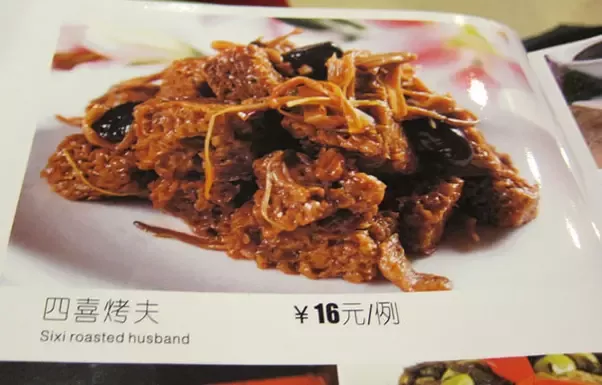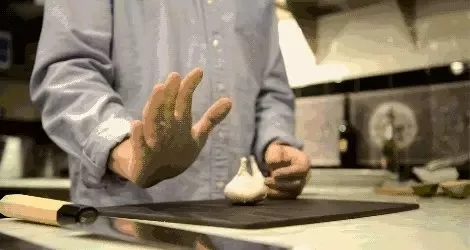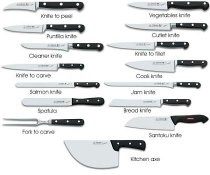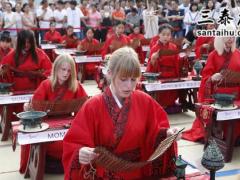最中国式的事物是什么? [美国媒体]
quora网友:沟通交流?他们用普通话。(产品)标签?他们用普通话。禁语标牌?你猜猜看,没错,还是用普通话。这就像没有英语和民主的美国一样。尽管如此,他们还是相当主动地把他们所用的普通话翻译成英语以供我们这些不会说他们语言的人理解使用。但问题出在与普通话相对应的英语翻译上因此造成歧义与误解......
-------------译者:龙腾翻译总管-审核者:龙腾翻译总管------------
What are the most Chinese things ever?
-------------译者:龙腾翻译总管-审核者:龙腾翻译总管------------
Neharik Umashankar Lifelong Life-Liver upxed Feb 18
Their translations
他们的翻译。
Almost anything and everything in China takes place in Mandarin their national language.
几乎所有的事物在中国都使用他们的国语普通话标识。
Talking? Mandarin. Labelling? Mandarin. Signs? You guessed it Mandarin as well. It’s like the United States without the English language and democracy.
Despite all this they do take some initiative to translate all of their Mandarin into English for those of us who cannot speak their language.
The thing with Mandarin is that some of it sticks behind with the English translation hence misinterpreting it. As Mandarin is such a diverse and complex language one can’t help if such mistakes do happen.
沟通交流?他们用普通话。(产品)标签?他们用普通话。禁语标牌?你猜猜看,没错,还是用普通话。这就像没有英语和民主的美国一样。尽管如此,他们还是相当主动地把他们所用的普通话翻译成英语以供我们这些不会说他们语言的人理解使用。但问题出在与普通话相对应的英语翻译上因此造成歧义与误解。因为普通话是种纷繁复杂的语言,所以一旦这种翻译错误真的发生了,它(对那些不懂普通话的人来说)就没有任何帮助。
Some of these ‘mistakes’ can make for rather interesting signs and labels:
其中有些“错误”造就了一些相当有趣的标牌和产品标签(商品标注):
Yeah I hate veggies too
没错,我也讨厌蔬菜。
Interesting choice of meat
还真是有趣的荤食选择。
I wonder what Wang did to deserve that
我好奇Wang是做了什么要受到这样的惩罚。
Oh the irony
哦,这暗含的讽刺意味啊。
(译注:beware of safety意思是“谨防安全”,而我们要谨防当心的是危险.....所以正确的翻译应该是Look out!Be careful!Caution!)
First we burn him now we use him as seasoning
我们先是把Wang烧了,现在还用他作佐料...
Now I don’t mean to hate on the Chinese in any way. I’ve lived in China for a year and a half and it’s been a great experience so far. In fact most of their translations are accurate enough for foreigners such as myself to understand.
But only in China can you find the one unexpected mistranslation that makes for a mirthful moment when it does happen. And you certainly can’t blame me if I let out a laugh or two after having a look at these.
好了,先说明这并不意味我恨中国人。我在中国已经住了一年半,到目前为止这都是一次非常有趣非凡的经历。事实上,他们的大部分翻译已经准确到能让我这样的外国人看得懂的程度了。但是,只有在中国你才能找到一些让你意想不到的误译,而当你找到时那真是一个让人愉快的时刻。在我看到这些误译后若忍不住笑了一两声,这你当然不能怪我了。
-------------译者:营养快线-审核者:hht288------------
Michelle Zhou upxed Mar 24
Intimidating Warning Signs
吓人的警告标牌。
Due to the large population and not enough police officers the people in China have developed a unique culture of intimidating warning signs:
由于人口基数大且警员人数不足,在中国人们已经开创出了一种独特吓人的警告标志文化:
Road sign: “Please drive safely there is no hospital nearby.”
路标:“请您安全驾驶,附近没有医院。”
Office building: “No parking at the gate violations will be deflated (tires).”
办公楼处:“门口严禁停车,违者(轮胎)将被放气。”
Construction site: “My dear workers: When you’re out working pay attention to safety if you have an accident some other dude will sleep with your wife beat your kids and spend your death pensions! Work safely for your own sake.”
建筑工地处:“亲爱的工友们:在外打工,注意安全,一旦发生事故:别人睡你媳妇,打你孩子,花你的抚恤金!打工安全,为你自己。”
Neighborhood watch: “Attention all thieves! Once captured you will be beaten all the way from the front-alley to the back-alley. This alley is 786 meters long.”
邻里监督标识:“请小偷们注意!一经抓获,从巷头打到巷尾。全巷长786米。
These are serious warning signs no kidding.
我没跟你开玩笑,这都是些非常严肃的警告标志。
Richmond Acosta Mar 5 · 167 upvotes
And I thought Manila's traffic warning signs are scary
然后我还天真地认为马尼拉的交通警示牌才吓人。
Do not cross people have died (crossing) here.
不要横穿马路,有人因此死在这里了。
-------------译者:谈笑风扔-审核者:龙腾翻译总管------------
Jeffrey Teoh I write. I read. upxed May 4
Chinese knife
中国菜刀。
In the Chinese household we only use one knife the Chinese knife. It is used to cut everything:
在中国家庭中,我们只用一把刀——中国菜刀。它可以用来切所有东西。
Need to cut meat? No problem!
切肉?没问题!
Need to cut something soft? No problem!
切软的东西?没问题!
Need to cut vegetables? No problem!
切蔬菜?没问题!
Want to cut up slices of cake? No problem!
想切一片蛋糕?没问题!
Need to crush garlic? No problem!
拍大蒜?没问题!
Who says we need these?
谁说我们需要这些刀具的?
Kowteng Wong Apr 23 · 184 upvotes including Jeffrey Teoh
I always find this fascinating. The Chinese usually simplify the use of household utensils to the minimum in design.
我一直觉得这很神奇。中国人总是在家用器具的设计上将其最简化。
Let me name a couple of these. Chinese use the wok for stir frying deep frying steaming and even stewing although not so common.
我来打几个比方。中国人能用锅来搅拌、炒、炸、蒸,甚至是炖东西,尽管(炖)不怎么普遍。
Everything can be eaten with the help of a pair of chopsticks and a spoon. No need for fork knife spoon of different designs for different food.
借助一双筷子和一把汤匙什么东西都能吃。不需要根据食物的不同来使用相应的刀、叉和各式各样的汤匙。
Jeffrey Teoh Apr 23 · 28 upvotes including Kowteng Wong
Exactly! No fancy equipments just simplistic yet it can achieve so many things!
没错!没有花哨的器具,简单的一把菜刀就能做到很多事!
-------------译者:xingxingjie-审核者:hht288------------
Pak L. Huide studied at China upxed Jul 11
This thing is made in the Qing dynasty it’s nicknamed “the mother of all Chinese ceramics”(瓷母) What it achieves is to apply every Chinese ceramic technique into the making of one object. Normally Chinese ceramics would be officially classified by their glazing techniques like “red glazed ware” “green glazed ware”. But this piece is so decorated that it’s official name is “All kinds of glaze ware” (各种釉彩大瓶)
这东西造于清朝,它被称为“瓷母”。它是将各种瓷釉技术融为一体制作而成的。通常来讲,一般瓷器按其上釉的技术可分类为“红釉瓷器”“绿釉瓷器”等,可上图这件瓷器因为采用了多种釉来装饰其器身,所以其官方名为“各种釉彩大瓶”。
Mind you every color of glaze has a different chemical mix. Every piece has to be fired at different temperatures and be fired in different kilns. Once finished the different pieces would have to be sent to the Palace and be fired again to make the complete ware. Then you do the brush work and then you fire it again. All in all this vase has 15 layers of glaze to go through. Every picture on this piece carries heavy symbolic meaning that would take hours to explain. This piece is undoubted the pinnacle of technical achievement in the history of ceramics.
请仔细听好,每一层釉彩的颜色都有着不同的化学成分,每一层颜色都是在不同的窑里面以不同的温度烧造出来的。一旦这些不同的釉彩层都完成了,将被送到故宫里再次烧造来完成最后一道釉彩工序。然后是描画、再烧造。这个大瓶全部加起来共有15层釉,器身上的每一副画都承载着浓厚的象征意义,可能需要花费几个小时才能解释清(这些画面的意义)。这件作品无疑是陶瓷史上技术成就的巅峰。
But this is not the most Chinese thing ever. The most Chinese thing ever is how the Chinese actually regard this piece. They call it UGLY and UNNATURAL. In fact it is even called an abomination. The effort put into this piece is too obvious the beauty too shallow. Therefore this piece is not actually highly regarded besides its technicality.
但是这不是最具中国特色的东西。最具中国特色的事物是中国人实际上怎样看待这个大瓶的。他们认为这个大瓶“丑陋”并且“极不自然”。事实上这曾经是一个让人厌恶的作品。这种把各种单一的美釉聚集在同一个瓷器上的努力太过肤浅了。所以这个大瓶除了体现烧造技术的高超难度,在艺术层面上并不被高度重视。
Now this is a different story. On this Song Dynasty ware a leaf was carefully laid over the still wet glaze and fired in the kiln. The leaf burns away but leaves its shadow permanently onto the ceramic. Therefore one instant becomes eternal and the nature of reality is imprinted onto the vessel itself. This piece is not only beautiful by itself but also because of what it has to say about nature and the impermanence of it all.
好了,那说起来就是另一个完全不同的故事了。 在这个宋代的瓷器上,一片叶子被精心的放置在未加工过的湿釉上然后放到窑里烧造。叶子被烧掉了,但它留下的形态烙印却永远地留在了瓷器上。因此,一瞬间孕造出永恒,现实的本质也在器皿上留下痕迹。这件作品不仅仅是瓷器本身漂亮,它的美也体现在其呈现出的那种自然和世事无常变幻之感。
And I think to value the latter piece over the former is the most Chinese thing of all.
我认为重视后面(宋瓷)的价值高于前者(清代瓷母)的这种理念才是最具中国特色的东西。
版权声明
我们致力于传递世界各地老百姓最真实、最直接、最详尽的对中国的看法
【版权与免责声明】如发现内容存在版权问题,烦请提供相关信息发邮件,
我们将及时沟通与处理。本站内容除非来源注明五毛网,否则均为网友转载,涉及言论、版权与本站无关。
本文仅代表作者观点,不代表本站立场。
本文来自网络,如有侵权及时联系本网站。
图文文章RECOMMEND
热门文章HOT NEWS
-
1
Why do most people who have a positive view of China have been to ...
- 2
- 3
- 4
- 5
- 6
- 7
- 8
- 9
- 10
推荐文章HOT NEWS
-
1
Why do most people who have a positive view of China have been to ...
- 2
- 3
- 4
- 5
- 6
- 7
- 8
- 9
- 10





























